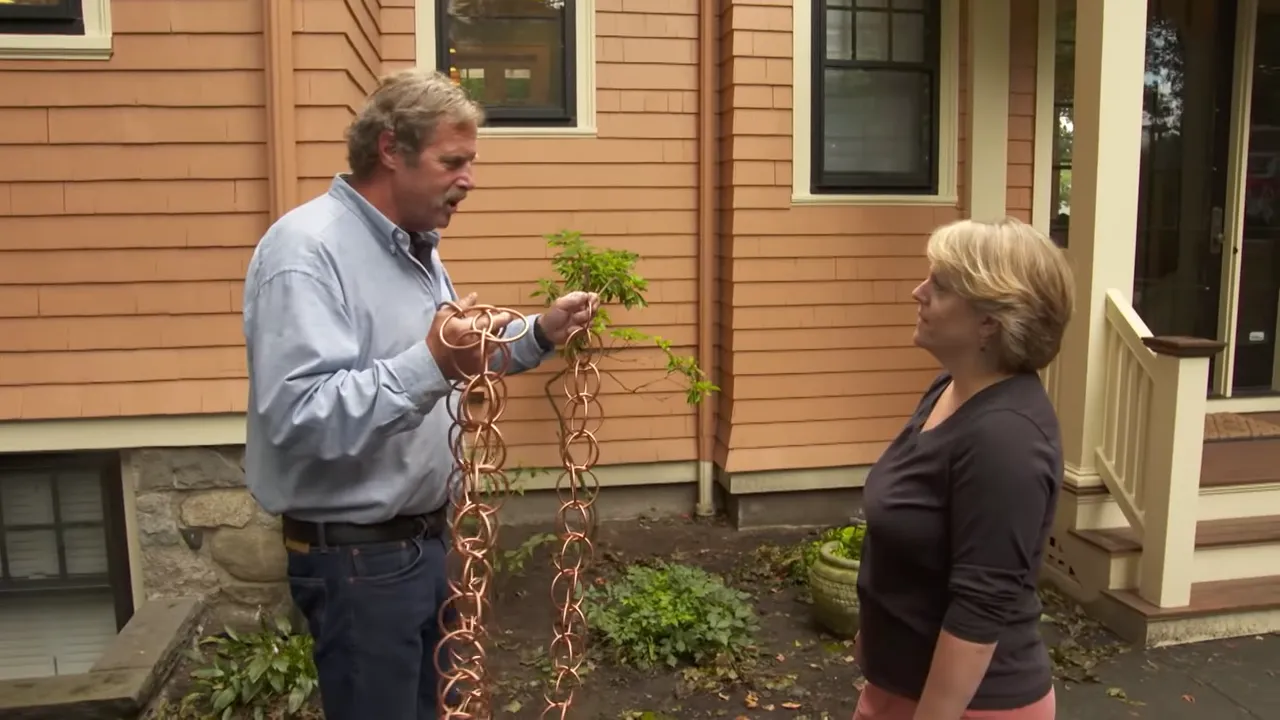Installing a rain chain involves attaching it to the rain gutter downspout and ensuring proper drainage. Rain chains are a stylish alternative to traditional downspouts, providing an aesthetically pleasing way to guide rainwater from your roof to the ground.
With their decorative designs and soothing sound of water trickling down, rain chains can add a unique touch to your outdoor space. To install a rain chain, you start by removing the existing downspout from the gutter. Then, attach a gutter adaptor or a decorative chain holder to the downspout opening.
Finally, hang the rain chain from the adaptor or chain holder, making sure it is securely fastened. Ensure that the rain chain reaches the ground or a drainage basin for effective water flow. With these simple steps, you can easily install a rain chain and enhance the beauty of your home.
Overview Of Rain Chains: An Attractive Alternative To Downspouts
Rain chains have gained popularity in recent years as a decorative and functional alternative to traditional downspouts. They offer a unique way to manage rainwater runoff while adding visual appeal to your outdoor space. In this blog post, we will discuss the benefits of using rain chains and provide a step-by-step guide on how to install them.
Brief Explanation of Rain Chains as a Decorative and Functional Alternative to Traditional Downspouts
Rain chains are chains or cups that are hung from the eaves of your roof to collect rainwater and guide it downward. Instead of directing rainwater through a conventional downspout, rain chains create a mesmerizing waterfall effect, enhancing the aesthetics of your home. They come in various designs, including cup-shaped, link-style, or even featuring decorative elements such as flowers or bells.
These chains serve both a decorative and functional purpose. Not only do they add charm to your outdoor area, but they also help channel rainwater from your roof to the ground, preventing erosion and potential flooding.
Benefits of Using Rain Chains in Managing Rainwater
Rain chains offer several advantages over traditional downspouts when it comes to managing rainwater:
- Enhanced Aesthetics: Rain chains act as beautiful focal points for your outdoor space, adding a touch of elegance and personality to your home.
- Reduced Splashback: Unlike downspouts, rain chains create a gentler water flow, minimizing splashback and preventing soil erosion around the building.
- Efficient Drainage: The open design of rain chains allows rainwater to flow freely, preventing clogging and ensuring efficient drainage.
- Water Conservation: By collecting rainwater in a rain barrel or other container, you can reuse it for gardening or other purposes, promoting sustainable water usage.
- Easy Installation: Installing a rain chain is a straightforward process that can be done by homeowners with basic DIY skills, saving you time and money compared to hiring a professional.
In conclusion, rain chains offer both visual appeal and functionality, making them an attractive alternative to traditional downspouts. Their unique design and numerous benefits make them a worthwhile addition to any home, allowing you to manage rainwater in an eco-friendly and aesthetically pleasing manner.
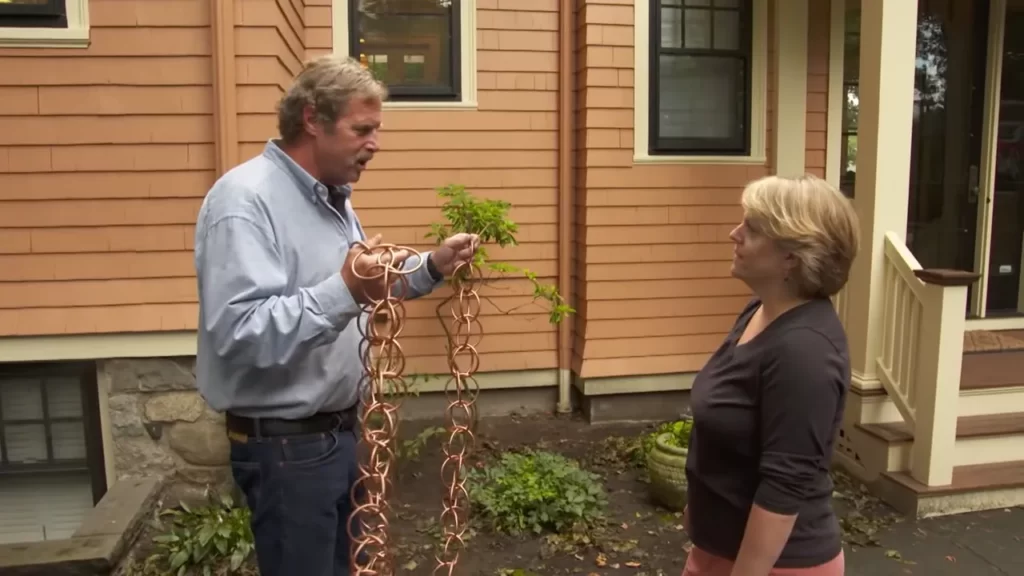
Choosing The Right Rain Chain For Your Home
When it comes to adding an elegant and functional touch to your home’s exterior, installing a rain chain is a great choice. Not only do rain chains efficiently guide rainwater runoff from your gutters to the ground, but they also provide a visually appealing alternative to traditional downspouts. To ensure you select the perfect rain chain for your home, there are a few key factors to consider: the style, material, and length. Let’s take a closer look at each of these factors.
Factors to consider when selecting a rain chain
1. Style: Rain chains come in a variety of styles that cater to different tastes and architectural aesthetics. Whether you have a modern, traditional, or rustic home, there is a rain chain design to suit your needs. Some popular styles include cup chains, link chains, and decorative chains. Consider the overall look and feel of your home’s exterior when choosing the right style that complements its aesthetics.
2. Material: Rain chains are available in various materials, each offering its own unique charm and durability. Common materials include copper, brass, aluminum, and stainless steel. Copper rain chains develop an attractive patina over time, while brass provides a classical elegance. Aluminum and stainless steel rain chains offer a contemporary and sleek appearance. Take into account the desired lifespan and maintenance requirements of each material.
3. Length: Determining the ideal length of your rain chain is crucial for effective water flow. Too long of a rain chain could cause excessive splashing, while a chain that is too short might not efficiently direct water away from your home’s foundation. To measure the appropriate length, consider the height of your gutter and the distance you’d like the rain chain to extend from the ground. Keep in mind that you can always adjust the length by removing or adding extra links.
Popular rain chain designs and how to match them with your home’s aesthetics
With a wide range of rain chain designs available, it’s important to select one that complements your home’s aesthetics. Here are a few popular rain chain designs:
| Design | Description | Matching Aesthetics |
|---|---|---|
| Cup chains | Consist of interconnected cups that catch and guide the water. | Ideal for traditional, farmhouse, and rustic-style homes. |
| Link chains | Consist of interconnected links that create an intricate pattern. | Well-suited for modern and contemporary homes. |
| Decorative chains | Feature decorative elements such as flowers, leaves, or animals. | Add a whimsical touch to various architectural styles. |
Tips for determining the ideal length of rain chain for effective water flow
- Measure the height of your gutter and subtract the desired distance between the bottom of the gutter and the ground.
- If your rain chain is too long, you can easily adjust it by removing extra links or sections.
- Consider the average rainfall in your area when determining the necessary length of the rain chain.
- Ensure the rain chain is long enough to direct water away from the foundation of your home to prevent water damage.
- Remember that a rain chain can always be extended or shortened if needed.
By taking into account the style, material, and length of a rain chain, you can select the perfect one that not only complements your home’s aesthetics but also effectively manages rainwater runoff. Install the rain chain with confidence, knowing that you’ve made a visually appealing and functional addition to your home’s exterior.
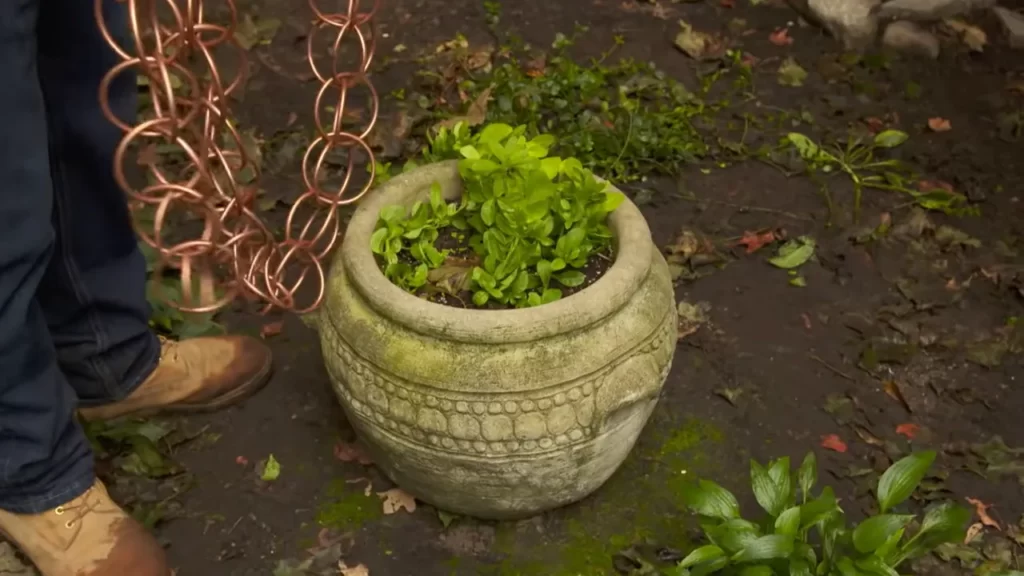
Step-By-Step Guide: How To Install A Rain Chain
Installing a rain chain can add functionality and charm to your outdoor space. Using a rain chain instead of a traditional downspout allows you to enjoy the soothing sound of water cascading down from your gutters while also directing rainwater away from your foundation. Follow this step-by-step guide to effortlessly install a rain chain and upgrade your home’s water drainage system.
Preparing the Installation Area
Before installing your rain chain, it’s important to properly prepare the installation area. Start by assessing the existing downspout and identifying a suitable location for the rain chain. Consider factors such as proximity to plants and structures, as well as ease of access for maintenance. Clear any obstacles or debris around the installation area to ensure a smooth installation process.
Removing the Downspout and Attaching the Gutter Adapter
Once the installation area is ready, safely detach the downspout from the gutter system. This can usually be done by loosening the screws or brackets holding it in place. Next, connect the gutter adapter to redirect the water flow towards the rain chain. The gutter adapter should fit securely and maintain a stable connection to ensure proper water diversion.
Installing the Rain Chain and Anchoring System
With the gutter adapter in place, it’s time to attach the rain chain. Securely connect the rain chain to the gutter adapter or downspout outlet using hooks or clips. Proper stability is vital to prevent excessive swinging during heavy rain. Consider using an anchoring system, such as a stake or decorative basin, to ensure your rain chain stays in place and functions optimally.
Test and Adjust the Rain Chain Installation
After the rain chain is securely installed, it’s important to test its functionality. Check the water flow by simulating rain or using a garden hose. Observe the movement of the water down the chain to ensure proper drainage. Make any necessary adjustments to optimize water flow and prevent splashback, such as adjusting the height or angle of the rain chain.
Maintaining and Caring for Your Rain Chain
Regular maintenance is key to keeping your rain chain functioning effectively. Clean the rain chain regularly, removing any debris or leaves that may cause clogging. A brush or a gentle stream of water can be used to clean the chain. Additionally, consider applying protective coatings or treatments to enhance its durability and longevity, especially if your rain chain is made of copper or another susceptible material.
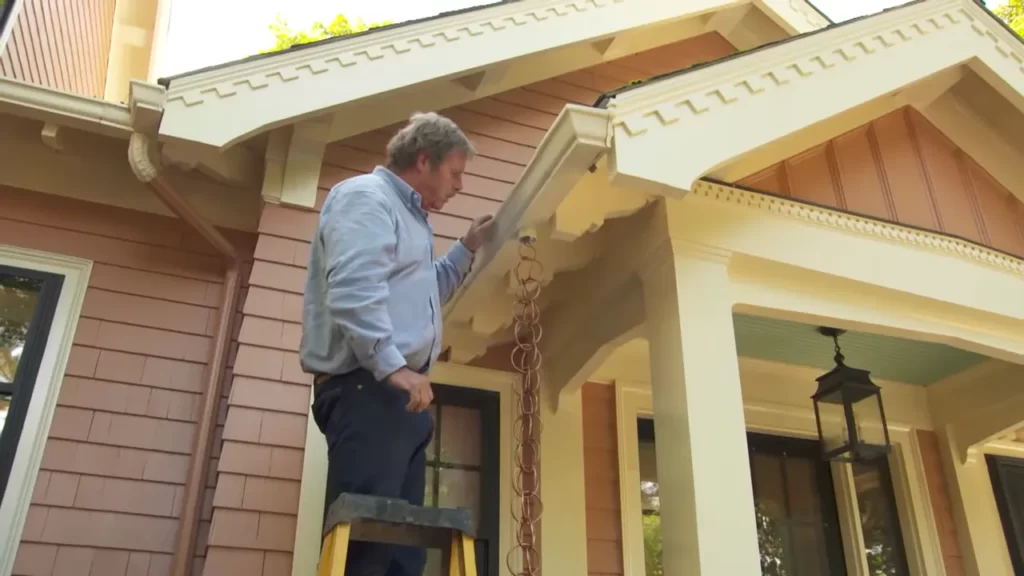
Additional Tips And Considerations For Rain Chain Installation
Installing a rain chain can add a beautiful and functional element to your outdoor space. Not only does it provide an attractive alternative to traditional downspouts, but it also allows you to harness and utilize rainwater. In this section, we will explore some additional tips and considerations to ensure a successful rain chain installation.
Proper positioning of the rain chain to avoid damage to the foundation or landscape
When installing a rain chain, it is crucial to consider its positioning to prevent any potential damage to the foundation or surrounding landscape of your home. Here are some important points to keep in mind:
- Choose a location that is away from the foundation to avoid excessive water accumulation, which could lead to seepage or erosion.
- Ensure that the rain chain captures the runoff from the roof effectively without causing splashing or pooling.
- Consider the length of the rain chain and adjust it accordingly, so it reaches the ground or a designated catch basin while still allowing sufficient clearance.
Installing a catch basin or rain barrel to collect and utilize rainwater
One of the significant advantages of using a rain chain is the opportunity to collect and utilize rainwater. This not only helps to conserve water but also provides a sustainable solution for watering your garden or landscape. Here are some guidelines for installing a catch basin or rain barrel:
- Select an appropriate location for the catch basin or rain barrel, ensuring it is easily accessible for maintenance and use.
- Position the catch basin or rain barrel directly beneath the rain chain’s endpoint. This allows the rainwater to flow directly into the collection system.
- Consider adding a filter to the catch basin or rain barrel to remove debris and prevent clogging.
- Regularly monitor the water level in the catch basin or rain barrel and use the collected rainwater for watering plants or other outdoor purposes.
Addressing potential issues and troubleshooting common installation challenges
While installing a rain chain is relatively straightforward, there can be some challenges that may arise along the way. Here are some common issues that you may encounter and tips for troubleshooting:
| Issue | Troubleshooting Tips |
|---|---|
| The rain chain is too short or too long | Measure the desired length carefully before installation and adjust accordingly. Consider adding or removing links to achieve the optimal length. |
| Water splashes excessively or pools at the base | Try adjusting the positioning of the rain chain to ensure proper water flow. You can also consider adding a splash guard or extension to redirect the water. |
| The rain chain gets easily clogged with debris | Regularly inspect and clean the rain chain to remove any debris or blockages. Installing a leaf guard or gutter filter can help minimize clogging. |
By following these additional tips and considering these important factors, you can successfully install a rain chain that not only enhances the aesthetic appeal of your home but also provides a practical solution for managing rainwater.
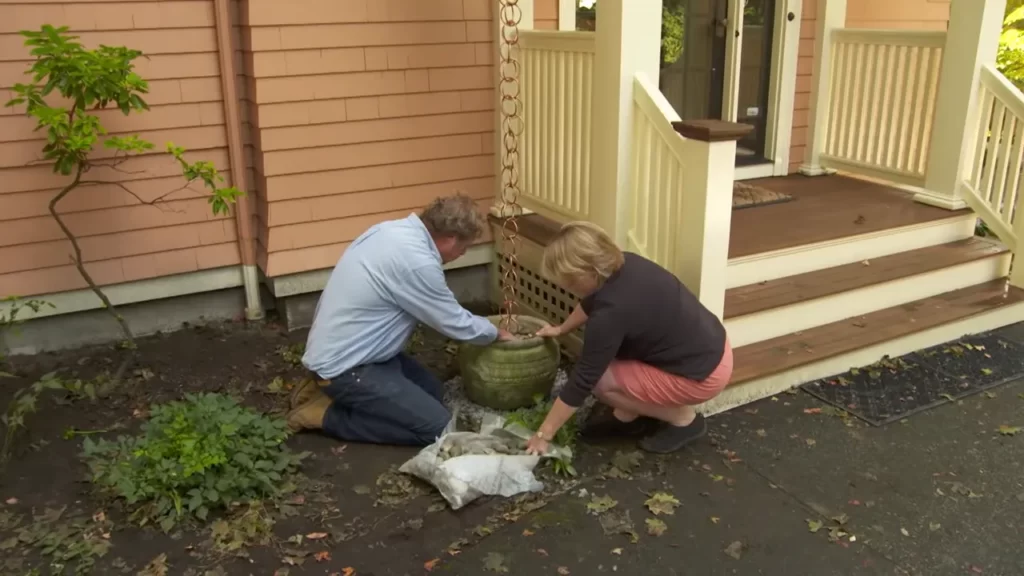
Enhancing Your Outdoor Aesthetics With Rain Chains
Incorporating rain chains into your garden or landscape can add a touch of elegance, functionality, and visual appeal. These beautiful alternatives to traditional downspouts can transform the way rainwater flows, creating a captivating and soothing element in your outdoor space. With their unique designs and customizable options, rain chains offer endless opportunities to enhance your outdoor aesthetics.
Incorporating Rain Chains as a Design Element in Your Garden or Landscape
One of the most exciting aspects of rain chains is their ability to seamlessly blend into your garden or landscape as a design element. Whether you have a traditional or contemporary style, there is a rain chain design that can complement your outdoor aesthetic. For a classic look, consider a simple link chain or a cup-style rain chain. If you prefer something more whimsical, there are options with charming shapes like flowers, birds, or even dragonflies.
Moreover, rain chains can be incorporated into various features of your outdoor space. You can hang them from your roof, attach them to a gutter, or even place them in large planters for a standalone statement piece. By strategically placing rain chains in your garden or landscape, you can create a captivating visual focal point that adds a sense of harmony and tranquility to your outdoor environment.
Creative Ways to Personalize and Customize Your Rain Chain for a Unique Look
If you’re looking to add a personal touch to your rain chain, there are plenty of creative ways to customize it for a unique look that reflects your style and personality. Consider adding decorative elements such as colored glass beads, seashells, or small wind chimes to the cups or links of your rain chain. These additions not only create a visually appealing effect but also produce delightful sounds as rainwater cascades down.
Furthermore, you can also experiment with different materials and finishes for your rain chain. Copper rain chains develop a beautiful patina over time, while stainless steel rain chains offer a sleek and modern aesthetic. Additionally, you can paint your rain chain to match your outdoor color scheme or opt for a bold and contrasting hue to make a statement.
Showcasing the Charm and Beauty of Rain Chains in Different Weather Conditions
Rain chains are not only fascinating to look at, but they also showcase their charm and beauty in different weather conditions. Whether it’s a gentle drizzle, a heavy downpour, or even a light snowfall, rain chains gracefully guide rainwater down their cascading cups or links, creating a mesmerizing sight. The sound of rainwater trickling through your rain chain adds another layer of sensory delight, making it a truly enchanting experience.
In addition to their visual and auditory appeal, rain chains offer functional benefits. By gently guiding rainwater, they help prevent soil erosion and protect your garden or landscape from potential water damage. With their captivating aesthetics and functional benefits, rain chains are a perfect addition to any outdoor space, ensuring you can enjoy the beauty of nature even on rainy days.
Frequently Asked Questions
How Are Rain Chains Attached?
Rain chains are attached by removing the downspout from the gutter and connecting the rain chain to the hole left behind. The rain chain usually comes with a hook at the top that hooks onto the gutter hole and a decorative weight at the bottom to keep it steady during rainfall.
Do Rain Chains Have To Be Attached To A Gutter?
Rain chains do not necessarily have to be attached to a gutter. They can be installed independently, directing rainwater into a receptacle or a rain barrel. This provides an aesthetically pleasing alternative to traditional downspouts and allows for water collection.
What Do You Put At The Bottom Of A Rain Chain?
At the bottom of a rain chain, you can place a decorative basin, gravel, or stones to collect and slow down the flow of water. This helps to prevent erosion and direct water away from your foundation.
Where Do You Place A Rain Chain?
Rain chains are typically placed in areas where rainwater runoff needs to be managed. They can be attached to a downspout or hung from a gutter. The ideal location is near a garden or open area, allowing the water to flow freely and be collected in a rain barrel or divert it away from the house.
Conclusion
Installing a rain chain is a simple yet effective way to enhance the beauty of your home while also efficiently managing rainwater. By following the steps outlined in this guide, you can successfully install a rain chain and enjoy the benefits it offers.
From choosing the right materials to properly securing it in place, these tips ensure a seamless installation process. So go ahead and give your home a unique and eco-friendly touch with a rain chain!
